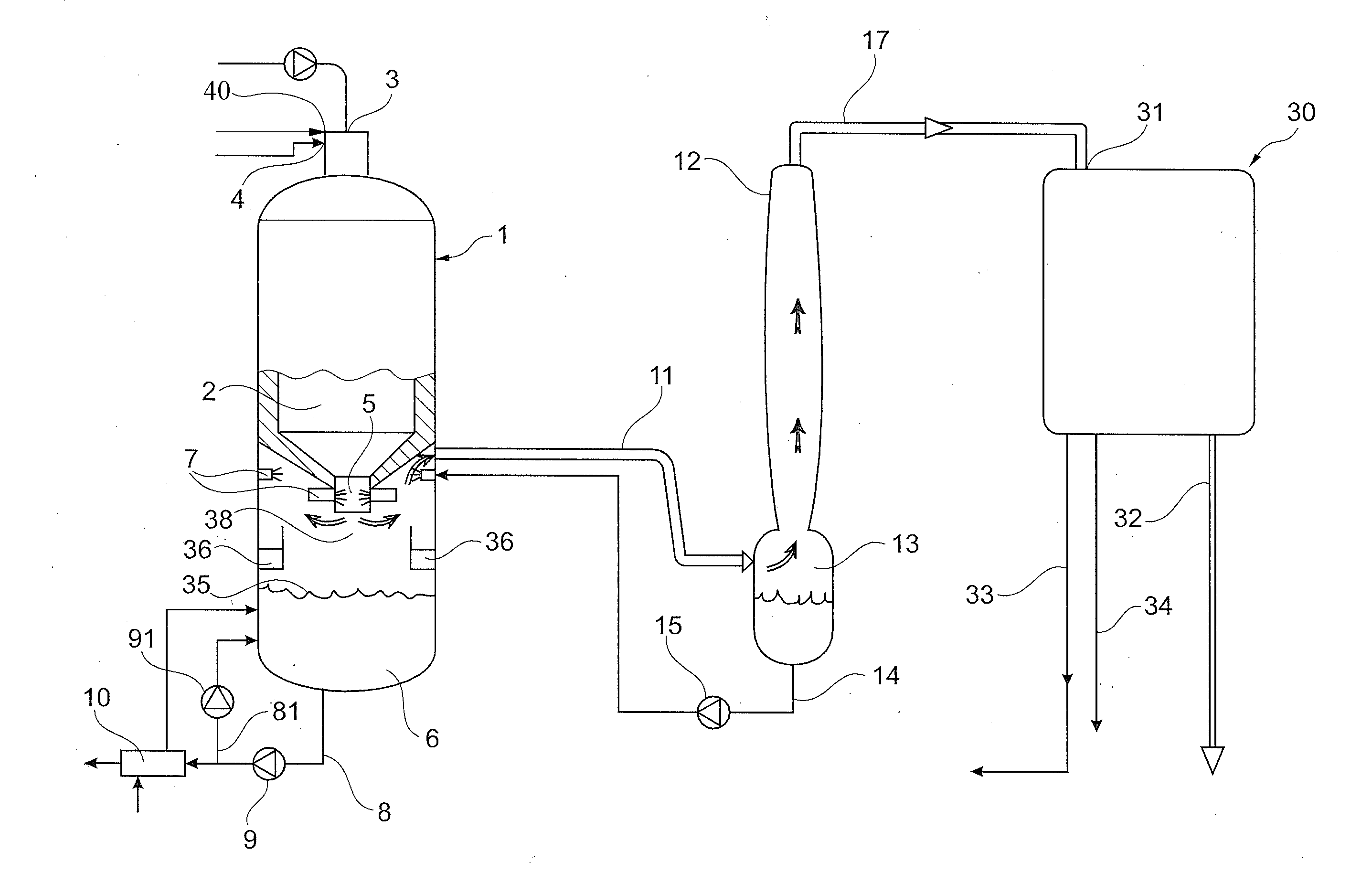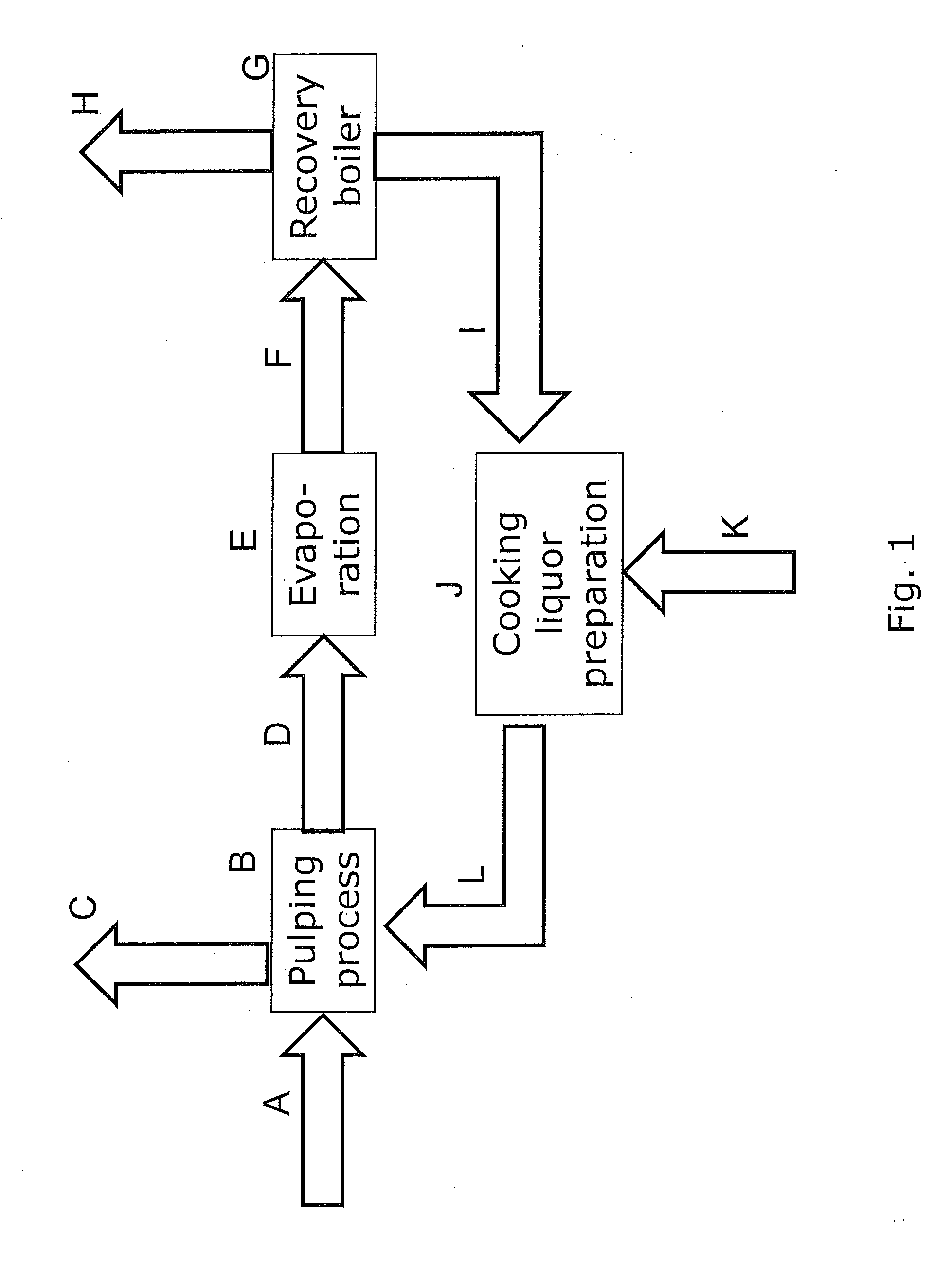Gasification of sulphite thick liquor
a technology of sulphite and thick liquor, which is applied in the direction of pulping with acid salts/anhydrides, pulp regeneration, textiles and paper, etc., can solve the problems of difficult pulping of certain species of wood, and more complicated chemical recovery, so as to achieve high carbon content, high energy efficiency of the process, and efficient chemical recovery
- Summary
- Abstract
- Description
- Claims
- Application Information
AI Technical Summary
Benefits of technology
Problems solved by technology
Method used
Image
Examples
Embodiment Construction
[0034]The following detailed description, and the examples contained therein, are provided for the purpose of describing and illustrating certain embodiments of the invention only and are not intended to limit the scope of the invention in any way.
[0035]In FIG. 1 is a flow scheme of a typical chemical recovery cycle for sodium-based sulphite pulping shown. Since this is common knowledge for a person skilled in the art, said chemical recovery cycle will be only briefly described here. Wood chips A are pumped into a digester where the delignification / pulping process B takes place in an appropriate sulphite cooking liquor at elevated temperature thereby releasing cellulose fibres, pulp, C. The pulp is separated from the spent cooking liquor, also termed thin sulphite thick liquor D, which spent liquor is a mixture of spent cooking chemicals and wood residues (e.g. lignins). The raw pulp C is then ready but may often be further treated in bleaching units and may thereafter be exported e...
PUM
| Property | Measurement | Unit |
|---|---|---|
| temperature | aaaaa | aaaaa |
| temperature | aaaaa | aaaaa |
| temperature | aaaaa | aaaaa |
Abstract
Description
Claims
Application Information
 Login to View More
Login to View More - R&D
- Intellectual Property
- Life Sciences
- Materials
- Tech Scout
- Unparalleled Data Quality
- Higher Quality Content
- 60% Fewer Hallucinations
Browse by: Latest US Patents, China's latest patents, Technical Efficacy Thesaurus, Application Domain, Technology Topic, Popular Technical Reports.
© 2025 PatSnap. All rights reserved.Legal|Privacy policy|Modern Slavery Act Transparency Statement|Sitemap|About US| Contact US: help@patsnap.com



